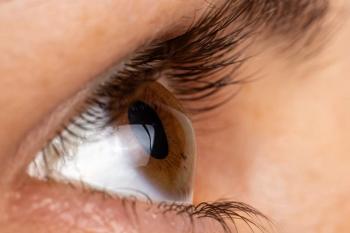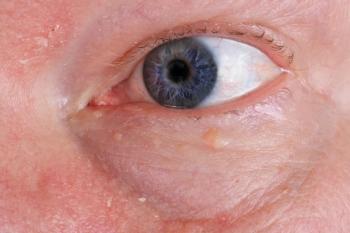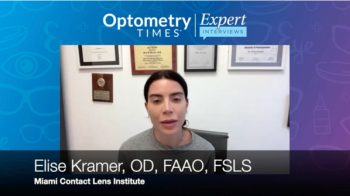
- May/June digital edition 2025
- Volume 17
- Issue 03
Epithelial thickness mapping introduces powerful diagnostic and screening tool
Laura Holtz, OD, states that although it is a small part of the cornea, the epithelium plays a vital role that affects refractive surgery recommendations, diagnosis of corneal ectasias, and contact lens warpage.
On the windy plains of North Dakota, the snowdrifts ebb and flow according to the dynamics of the wind, making most think of winter holidays, snow sports, and hot drinks. Those more acquainted with the eye, however, should be aware of the familiar behavior of the corneal epithelium as it is swept by the eyelids. Although it is a small part of the cornea, the epithelium plays a vital role that affects refractive surgery recommendations, diagnosis of corneal ectasias, and contact lens warpage.
Recent advancements in corneal imaging have isolated this superficial layer using epithelial thickness mapping (ETM), revealing epithelial conduct. ETM was described initially using methods of high-frequency ultrasound; however, this method is impractical for most providers and uncomfortable for patients due to the required immersion. Noncontact imaging of the ETM by optical coherence tomography (OCT) provides any practice with the resolution to image this single layer of the cornea, with scans that are nearly instantaneous to perform.
In normal eyes, the central epithelium has an average central thickness of 53 μm and gradually thins toward the periphery by approximately 2 μm. The inferior cornea is an average of 2 to 4 μm thicker than the superior, as the upper lids sweep the epithelium downward with each blink.1,2 Males appear to have slightly thicker epitheliums on average compared with females, and findings from many studies agree that children 6 years or older have epithelial profiles that mirror their adult counterparts.1
Epithelium post refractive laser surgery pools into the area of myopic ablation. A greater magnitude of refractive error that is treated results in a thicker central epithelium. Calibration of a laser to a cornea’s epithelium in photorefractive keratectomy can have a slight impact on the refractive result. Eyes with thicker-than-calculated epithelium develop slight myopic shifts, whereas eyes with thinner-than-calculated epithelium cause slight hyperopic shifts. However, in LASIK, the effect of epithelial thickening is less defined, although some myopic regression may be attributed to the epithelium.1
In hyperopic LASIK, the amount the epithelium thickens per diopter of refractive error is greater than the ratio for myopic ablation. The epithelium thins across the central zone and settles into the surrounding peripheral ablation. The type of refractive surgery performed is important to document in the patient history, as the epithelium post hyperopic LASIK can look remarkably similar to keratoconus.1
As keratoconus creates local corneal steepening, the epithelium thins across the apex of the cone and packs against the base, creating a “doughnut” appearance around the ectasia. Most commonly, the thinnest areas of the epithelium are inferotemporal, matching the most common location of cone development and deviating from the thick inferior epithelium seen in normal eyes.1
Diagnostic considerations
However, not all keratocones are created equally. Consider the anterior corneal topography in Figure 1.
The patient has steep and oblique but mostly symmetric astigmatism, yet they report decreased vision and inability to tolerate contact lenses. The posterior corneal curvature shows steepening consistent with keratoconus, but there is no cone to be seen. The ETM reveals a small area of thin epithelium temporally, surrounded by a collar of thickened cells (Figure 2). When compared with the anterior elevation map (Figure 3), the peak elevation correlates with the thinnest epithelium, exposing a small temporal cone. Returning to the anterior curvature map, imagine how the epithelium breaks against the cone like a wave, creating the steep lobes of astigmatism on either side, corresponding to the thickened areas on the epithelial map. Although not creating the full doughnut expected of keratoconus, identification of the same epithelial behavior aided the diagnosis of this eye’s keratoconus. ETM has been proven to help distinguish between normal eyes and subclinical keratoconus. In eyes that otherwise show normal keratometry, superior-inferior symmetry may have reverse epithelial thickness, with the thickest areas of epithelium being superior in subclinical keratoconus instead of inferior as in normal eyes.1,3
Epithelial remodeling in keratoconus may even begin secondary to posterior corneal changes, preceding the anterior corneal changes seen in later stages.4 Because of this, ETM can assist practitioners in determining eligibility for laser refractive surgery by identifying patients at risk preoperatively and potentially increasing inclusion of patients who have otherwise borderline corneal topography.1
ETM can also distinguish ectasia from contact lens warpage. Eyes with keratoconus and eyes with gas permeable (GP) lens–associated warpage both have a wide range of thicknesses across the cornea. In keratoconus, the thinnest point of the epithelium typically correlates with the thinnest pachymetry and often matches the shape of the mean power map. GP lenses create focal corneal steepening that matches focal epithelial thickening but will not match the thinnest point of the corneal pachymetry.5 Soft contact lens wear appears to have minimal effect on ETM in the short term; however, some data suggest that years of wear can lead to widespread epithelial thinning that persists even after lens wear is discontinued following a refractive surgery.1
The extent of ETM applications will continue to grow as the technology becomes more available. Addition of ETM modules onto existing OCT can improve practitioner access and application in ectasia screenings, refractive surgery referrals, and contact lens monitoring.
References
Abtahi MA, Beheshtnejad AH, Latifi G, et al. Corneal epithelial thickness mapping: a major review. J Ophthalmol. 2024;2024:6674747. doi:10.1155/2024/6674747
Luft N, Ring MH, Dirisamer M, et al. Corneal epithelial remodeling induced by small incision lenticule extraction (SMILE). Invest Ophthalmol Vis Sci. 2016;57(9):OCT176-OCT183. doi:10.1167/iovs.15-18879
Temstet C, Sandali O, Bouheraoua N, et al. Corneal epithelial thickness mapping using Fourier-domain optical coherence tomography for detection of form fruste keratoconus. J Cataract Refract Surg. 2015;41(4):812-820. doi:10.1016/j.jcrs.2014.06.043
Hashemi H, Heirani M, Ambrósio R Jr, Hafezi F, Naroo SA, Khorrami-Nejad M. The link between keratoconus and posterior segment parameters: an updated, comprehensive review. Ocul Surf. 2022;23:116-122. doi:10.1016/j.jtos.2021.12.004
Schallhorn JM, Tang M, Li Y, Louie DJ, Chamberlain W, Huang D. Distinguishing between contact lens warpage and ectasia: usefulness of optical coherence tomography epithelial thickness mapping. J Cataract Refract Surg. 2017;43(1):60-66. doi:10.1016/j.jcrs.2016.10.019
Articles in this issue
6 months ago
The toxic truths in eye health7 months ago
Taking your OCT outside of the posterior pole7 months ago
What do we lose if we do not value residencies?Newsletter
Want more insights like this? Subscribe to Optometry Times and get clinical pearls and practice tips delivered straight to your inbox.













































